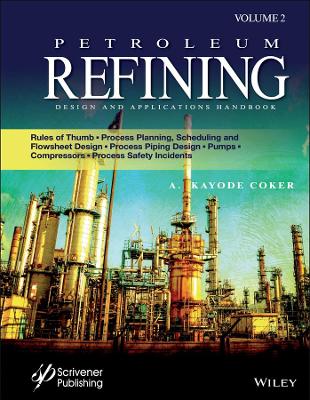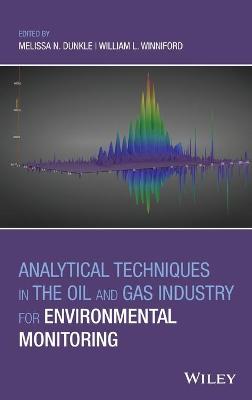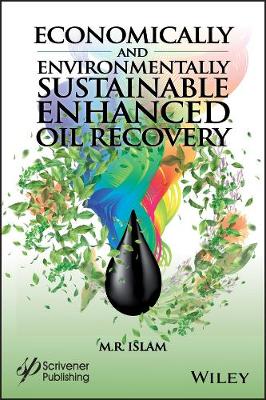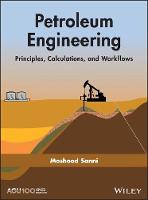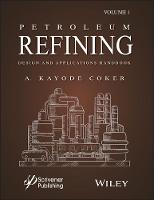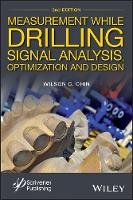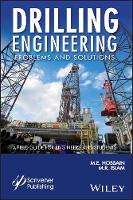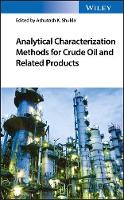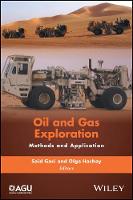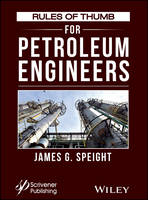Acoustic and Vibrational Enhanced Oil Recovery
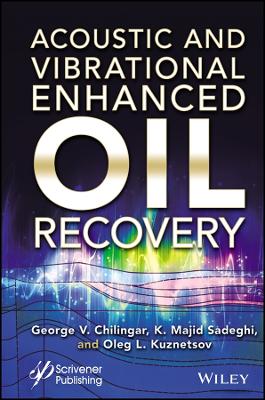 -15%
portes grátis
-15%
portes grátis
Acoustic and Vibrational Enhanced Oil Recovery
Kuznetsov, Oleg Leonidovich; Chilingar, George V.; Sadeghi, Kazem Majid
John Wiley & Sons Inc
05/2022
432
Dura
Inglês
9781119760153
15 a 20 dias
738
1 Introduction 1
1.1 Origin and Migration of Oil 5
1.1.1 Seismicity 6
1.1.2 Electrokinetics 7
1.1.3 Earth Tides 9
1.1.4 Compaction 9
1.1.5 Migration in a Gaseous Form 10
1.2 Seismic Vibration Techniques 11
1.2.1 Producing Well Experiments 11
1.2.2 Mechanisms of Interaction of Fluid Flow With the Vibro-Energy in Porous Media 12
References and Bibliography 13
2 Wave Spreading Patterns in the Porous Media 19
2.1 Spread of Vibration in Reservoir 19
2.2 Effect on the Wave Spread in the Oil Accumulations by the Geologic-Geophysical Conditions 26
2.3 Wave Spreading From the Vibrating Surface of the Reservoir Matrix Into the Saturated Medium 30
2.4 Excitation of Vibration in Oil Reservoirs 42
References and Bibliography 51
3 Directional Displacement of a Dispersed Phase 55
3.1 Simplest Models of the Vibrational Directional Displacement 55
3.2 Physical Mechanisms and Major Types of Asymmetry Causing Vibratory Displacement 61
3.3 Directed Motion of the Dispersed Phase in Vibrating Pore Channels 69
3.4 Directional Motion of the Vibrating Dispersed Phase in Pore Channels 82
References 87
4 Formation Damage Control and Cement Sheath Stability 89
4.1 Status of the Reservoir 89
4.2 Vibration Effect on the Reservoir's Heat Properties 95
4.3 Decolmatation of the Near-Bottomhole Zone in the Vibration Field 104
4.4 Cement Sheath Stability Around a Well in the Vibration Field 113
References and Bibliography 118
5 Effect of Vibration on Improving Oil Yield and Various Tertiary Recovery Technologies 123
5.1 Major Causes of Incomplete Oil Recovery From the Subsurface 123
5.1.1 Oil Displacement by Miscible Hydrocarbons 128
5.1.2 Oil Displacement by a High-Pressure Dry Gas 129
5.1.3 Oil Displacement by an Enriched Gas 130
5.1.4 Oils Displacement by Liquefied Petroleum Gas 131
5.1.5 Oil Displacement With Carbon Dioxide 132
5.1.6 Oil Displacement by Polymer Solutions 133
5.1.7 Oil Displacement by Micellar Solutions 135
5.1.8 Thermal Methods 138
5.1.9 The Vibroseismic Method 148
5.2 A Study of the Residual Formation Pressure in the Vibration Field 150
5.3 A Study of the Oil Capillary Displacement in the Vibration Field 163
5.4 Studies of the Oil and Water Gravity Flow in the Vibration Field 168
5.4.1 Absolute Permeability Effect 170
5.4.2 An Effect of Oil Viscosity 172
5.4.3 The Capillary Pressure Effect 173
5.4.4 The Oil and Water Phase Permeability Effect 173
References 179
6 Vibration Effect on Properties of Saturating Phases in a Reservoir 181
6.1 Changes in Interfacial Tensions and Rheological Parameters 181
6.1.1 A Newtonian Liquid 182
6.1.2 A Viscoplastic Liquid 182
6.2 Permeability Changes 186
6.2.1 A Single-Phase Flow 186
6.2.2 Two-Phase Flow 189
6.2.3 Three-Phase Flow 200
6.3 Capillary Pressure Changes 201
6.4 Interformational Oil Degassing and a Decline in the Formation Water Saturation 203
References 212
7 Energy Criteria 215
7.1 Parameters of Oscillatory Treatment and Conditions for Manifestation of Useful Effects in Saturated Geological Media 217
7.2 Wavelike Nature of the Oil-Saturated Geological Media Stress-Energy Exchange. Elastic Oscillations as an Energy Exchange Indicator and Regulator 220
7.2.1 Manifestation of Seismoacoustic Radiation in Oil-Saturated Media Exposed to Internal Stress Disturbance and Elastic Oscillation Treatment 221
7.2.2 Mechanism of Receptive Accumulation of Mechanical Stress Energy in Failing Oil-Saturated Media 233
7.3 Justification of Rational Wave Treatment for the Near-Wellbore Zone and Entire Reservoir 237
7.3.1 Reservoir Treatment With Elastic Oscillations 245
References and Bibliography 257
8 Types of Existing Treatments 261
8.1 Integrated Technologies of the Near-Wellbore Zone Vibrowave Treatment 264
8.1.1 Downhole Equipment 265
8.1.2 Integrated Vibrowave, Overbalance/ Pressure-Drawdown, and Chemical Treatment (VDHV) 271
8.1.3 Vibrowave and Foam Treatment (VPV) 275
8.1.4 Deep Chemical-Wave Reservoir Treatment (GRVP) 276
8.1.5 Remediation of Troubles When Shutting Off Water and Gas Entries 280
8.1.6 Coiled Tubing Wave Technologies (KVT) 282
8.1.7 Tubing and Bottomhole Cleanout Technology 284
8.1.8 HydroVibroSwabbing Technology 284
8.1.9 Hydraulic Fracturing Technology Combined with Vibrowave Treatment (HydroVibroFrac) 285
8.1.10 Hydraulic Fracturing Operations 287
8.1.11 Integrated Treatment of Water Production Wells 291
8.2 Enhanced Oil Recovery Technologies Based on Vibroseismic Treatment (VST) 293
References and Bibliography 308
9 Laboratory Experiments 311
9.1 Laboratory Experiments 311
9.1.1 Oil and Water Saturations of the Porous Medium Exposed to Elastic Waves 311
9.1.2 Rate of Displacement of Oil by Water and Effect of Elastic Waves on Relative Permeability to Oil 313
9.1.3 Degassing of Fluids by the Applied Vibro-Energy 313
9.2 Displacement of Oil by Gas-Free Water in the Presence of Elastic Waves 315
9.3 Displacement of Oil by CO2-Saturated Water in the Presence of Elastic Waves 316
9.4 Modeling of Oil Displacement by Water in Clayey Sandstones 317
References and Bibliography 318
10 Oil Field Tests 321
10.1 Abuzy Oil Field 321
10.2 Changirtash Oil Field 321
10.3 Jirnovskiy Oil Field, First Stage 323
10.4 Jirnovskiy Oil Field, Second Stage 324
References and Bibliography 326
11 Electrokinetic Enhanced Oil Recovery (EEOR) 327
11.1 Introduction 327
11.2 Petroleum Reservoirs, Properties, Reserves, and Recoveries 329
11.2.1 Petroleum Reservoirs 329
11.2.2 Porosity 329
11.2.3 Reservoir Saturations 329
11.2.4 Initial Reserves 330
11.2.5 Primary Oil Production and Water Cut 330
11.3 Relative Permeability and Residual Saturation 331
11.4 Enhanced Oil Recovery 332
11.5 Electrokinetically Enhanced Oil Recovery 332
11.5.1 Historical Background 333
11.5.2 Geotechnical and Environmental Electrokinetic Applications 334
11.5.3 Direct Current Electrokinetically Enhanced Oil Recovery 335
11.6 DCEOR (EEOR) and Energy Storage 336
11.6.1 Mesoscopic Polarization Model 337
11.7 Electrochemical Basis for DCEOR 339
11.7.1 Coupled Flows and Onsager's Principle 339
11.7.2 Joule Heating 341
11.7.3 Electromigration 341
11.7.4 Electrophoresis 342
11.7.5 Electroosmosis 342
11.7.6 Electrochemically Enhanced Reactions 342
11.7.7 Role of the Helmholtz Double Layer 343
11.7.7.1 Dissociation of Ionic Salts 343
11.7.7.2 Silicates 344
11.7.7.3 Phillosilicates and Clay Minerals 345
11.7.7.4 Cation Exchange Capacity 346
11.7.7.5 Electrochemistry of the Double Layer 347
11.8 DCEOR Field Operations 351
11.8.1 Three-Dimensional Current Flow Ramifications 352
11.8.2 Electric Field Mapping 353
11.8.3 Joule Heating and Energy Loss 353
11.8.4 Comparison of DC vs. AC Electrical Transmission Power Loss 354
11.9 DCEOR Field Demonstrations 356
11.9.1 Santa Maria Basin (California, USA) DCEOR Field Demonstration 356
11.9.2 Lloydminster Heavy Oil Belt (Alberta, Canada) DCEOR Field Demonstration 359
11.10 Produced Fluid Changes 362
11.11 Laboratory Measurements 363
11.11.1 Electrokinetics and Effective Permeability 366
11.11.2 Sulfur Sequestration 367
11.11.3 Carbonate Reservoir Laboratory Tests 367
11.12 Technology Comparisons 368
11.12.1 Comparison of DCEOR and Steam Flood Efficiency 368
11.12.2 Comparison of DCEOR and Steam Flood Costs 368
11.12.3 Comparison of DCEOR to Other EOR Technologies 369
11.13 Summary 371
11.14 Nomenclature 371
References 373
Addendum 381
Nomenclature 383
Symbols 385
About the Authors 391
Index 395
1 Introduction 1
1.1 Origin and Migration of Oil 5
1.1.1 Seismicity 6
1.1.2 Electrokinetics 7
1.1.3 Earth Tides 9
1.1.4 Compaction 9
1.1.5 Migration in a Gaseous Form 10
1.2 Seismic Vibration Techniques 11
1.2.1 Producing Well Experiments 11
1.2.2 Mechanisms of Interaction of Fluid Flow With the Vibro-Energy in Porous Media 12
References and Bibliography 13
2 Wave Spreading Patterns in the Porous Media 19
2.1 Spread of Vibration in Reservoir 19
2.2 Effect on the Wave Spread in the Oil Accumulations by the Geologic-Geophysical Conditions 26
2.3 Wave Spreading From the Vibrating Surface of the Reservoir Matrix Into the Saturated Medium 30
2.4 Excitation of Vibration in Oil Reservoirs 42
References and Bibliography 51
3 Directional Displacement of a Dispersed Phase 55
3.1 Simplest Models of the Vibrational Directional Displacement 55
3.2 Physical Mechanisms and Major Types of Asymmetry Causing Vibratory Displacement 61
3.3 Directed Motion of the Dispersed Phase in Vibrating Pore Channels 69
3.4 Directional Motion of the Vibrating Dispersed Phase in Pore Channels 82
References 87
4 Formation Damage Control and Cement Sheath Stability 89
4.1 Status of the Reservoir 89
4.2 Vibration Effect on the Reservoir's Heat Properties 95
4.3 Decolmatation of the Near-Bottomhole Zone in the Vibration Field 104
4.4 Cement Sheath Stability Around a Well in the Vibration Field 113
References and Bibliography 118
5 Effect of Vibration on Improving Oil Yield and Various Tertiary Recovery Technologies 123
5.1 Major Causes of Incomplete Oil Recovery From the Subsurface 123
5.1.1 Oil Displacement by Miscible Hydrocarbons 128
5.1.2 Oil Displacement by a High-Pressure Dry Gas 129
5.1.3 Oil Displacement by an Enriched Gas 130
5.1.4 Oils Displacement by Liquefied Petroleum Gas 131
5.1.5 Oil Displacement With Carbon Dioxide 132
5.1.6 Oil Displacement by Polymer Solutions 133
5.1.7 Oil Displacement by Micellar Solutions 135
5.1.8 Thermal Methods 138
5.1.9 The Vibroseismic Method 148
5.2 A Study of the Residual Formation Pressure in the Vibration Field 150
5.3 A Study of the Oil Capillary Displacement in the Vibration Field 163
5.4 Studies of the Oil and Water Gravity Flow in the Vibration Field 168
5.4.1 Absolute Permeability Effect 170
5.4.2 An Effect of Oil Viscosity 172
5.4.3 The Capillary Pressure Effect 173
5.4.4 The Oil and Water Phase Permeability Effect 173
References 179
6 Vibration Effect on Properties of Saturating Phases in a Reservoir 181
6.1 Changes in Interfacial Tensions and Rheological Parameters 181
6.1.1 A Newtonian Liquid 182
6.1.2 A Viscoplastic Liquid 182
6.2 Permeability Changes 186
6.2.1 A Single-Phase Flow 186
6.2.2 Two-Phase Flow 189
6.2.3 Three-Phase Flow 200
6.3 Capillary Pressure Changes 201
6.4 Interformational Oil Degassing and a Decline in the Formation Water Saturation 203
References 212
7 Energy Criteria 215
7.1 Parameters of Oscillatory Treatment and Conditions for Manifestation of Useful Effects in Saturated Geological Media 217
7.2 Wavelike Nature of the Oil-Saturated Geological Media Stress-Energy Exchange. Elastic Oscillations as an Energy Exchange Indicator and Regulator 220
7.2.1 Manifestation of Seismoacoustic Radiation in Oil-Saturated Media Exposed to Internal Stress Disturbance and Elastic Oscillation Treatment 221
7.2.2 Mechanism of Receptive Accumulation of Mechanical Stress Energy in Failing Oil-Saturated Media 233
7.3 Justification of Rational Wave Treatment for the Near-Wellbore Zone and Entire Reservoir 237
7.3.1 Reservoir Treatment With Elastic Oscillations 245
References and Bibliography 257
8 Types of Existing Treatments 261
8.1 Integrated Technologies of the Near-Wellbore Zone Vibrowave Treatment 264
8.1.1 Downhole Equipment 265
8.1.2 Integrated Vibrowave, Overbalance/ Pressure-Drawdown, and Chemical Treatment (VDHV) 271
8.1.3 Vibrowave and Foam Treatment (VPV) 275
8.1.4 Deep Chemical-Wave Reservoir Treatment (GRVP) 276
8.1.5 Remediation of Troubles When Shutting Off Water and Gas Entries 280
8.1.6 Coiled Tubing Wave Technologies (KVT) 282
8.1.7 Tubing and Bottomhole Cleanout Technology 284
8.1.8 HydroVibroSwabbing Technology 284
8.1.9 Hydraulic Fracturing Technology Combined with Vibrowave Treatment (HydroVibroFrac) 285
8.1.10 Hydraulic Fracturing Operations 287
8.1.11 Integrated Treatment of Water Production Wells 291
8.2 Enhanced Oil Recovery Technologies Based on Vibroseismic Treatment (VST) 293
References and Bibliography 308
9 Laboratory Experiments 311
9.1 Laboratory Experiments 311
9.1.1 Oil and Water Saturations of the Porous Medium Exposed to Elastic Waves 311
9.1.2 Rate of Displacement of Oil by Water and Effect of Elastic Waves on Relative Permeability to Oil 313
9.1.3 Degassing of Fluids by the Applied Vibro-Energy 313
9.2 Displacement of Oil by Gas-Free Water in the Presence of Elastic Waves 315
9.3 Displacement of Oil by CO2-Saturated Water in the Presence of Elastic Waves 316
9.4 Modeling of Oil Displacement by Water in Clayey Sandstones 317
References and Bibliography 318
10 Oil Field Tests 321
10.1 Abuzy Oil Field 321
10.2 Changirtash Oil Field 321
10.3 Jirnovskiy Oil Field, First Stage 323
10.4 Jirnovskiy Oil Field, Second Stage 324
References and Bibliography 326
11 Electrokinetic Enhanced Oil Recovery (EEOR) 327
11.1 Introduction 327
11.2 Petroleum Reservoirs, Properties, Reserves, and Recoveries 329
11.2.1 Petroleum Reservoirs 329
11.2.2 Porosity 329
11.2.3 Reservoir Saturations 329
11.2.4 Initial Reserves 330
11.2.5 Primary Oil Production and Water Cut 330
11.3 Relative Permeability and Residual Saturation 331
11.4 Enhanced Oil Recovery 332
11.5 Electrokinetically Enhanced Oil Recovery 332
11.5.1 Historical Background 333
11.5.2 Geotechnical and Environmental Electrokinetic Applications 334
11.5.3 Direct Current Electrokinetically Enhanced Oil Recovery 335
11.6 DCEOR (EEOR) and Energy Storage 336
11.6.1 Mesoscopic Polarization Model 337
11.7 Electrochemical Basis for DCEOR 339
11.7.1 Coupled Flows and Onsager's Principle 339
11.7.2 Joule Heating 341
11.7.3 Electromigration 341
11.7.4 Electrophoresis 342
11.7.5 Electroosmosis 342
11.7.6 Electrochemically Enhanced Reactions 342
11.7.7 Role of the Helmholtz Double Layer 343
11.7.7.1 Dissociation of Ionic Salts 343
11.7.7.2 Silicates 344
11.7.7.3 Phillosilicates and Clay Minerals 345
11.7.7.4 Cation Exchange Capacity 346
11.7.7.5 Electrochemistry of the Double Layer 347
11.8 DCEOR Field Operations 351
11.8.1 Three-Dimensional Current Flow Ramifications 352
11.8.2 Electric Field Mapping 353
11.8.3 Joule Heating and Energy Loss 353
11.8.4 Comparison of DC vs. AC Electrical Transmission Power Loss 354
11.9 DCEOR Field Demonstrations 356
11.9.1 Santa Maria Basin (California, USA) DCEOR Field Demonstration 356
11.9.2 Lloydminster Heavy Oil Belt (Alberta, Canada) DCEOR Field Demonstration 359
11.10 Produced Fluid Changes 362
11.11 Laboratory Measurements 363
11.11.1 Electrokinetics and Effective Permeability 366
11.11.2 Sulfur Sequestration 367
11.11.3 Carbonate Reservoir Laboratory Tests 367
11.12 Technology Comparisons 368
11.12.1 Comparison of DCEOR and Steam Flood Efficiency 368
11.12.2 Comparison of DCEOR and Steam Flood Costs 368
11.12.3 Comparison of DCEOR to Other EOR Technologies 369
11.13 Summary 371
11.14 Nomenclature 371
References 373
Addendum 381
Nomenclature 383
Symbols 385
About the Authors 391
Index 395




